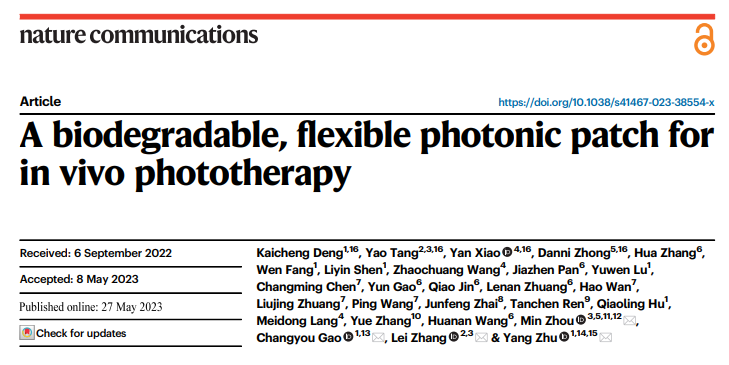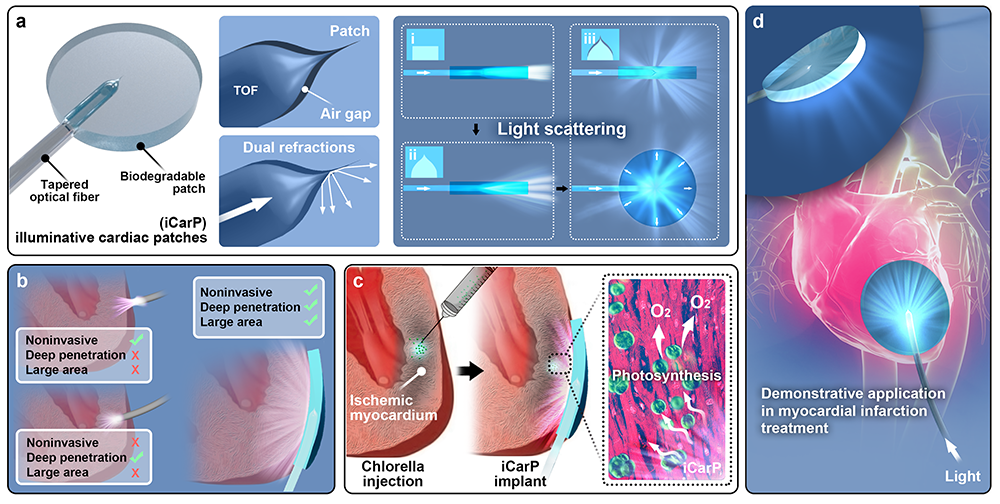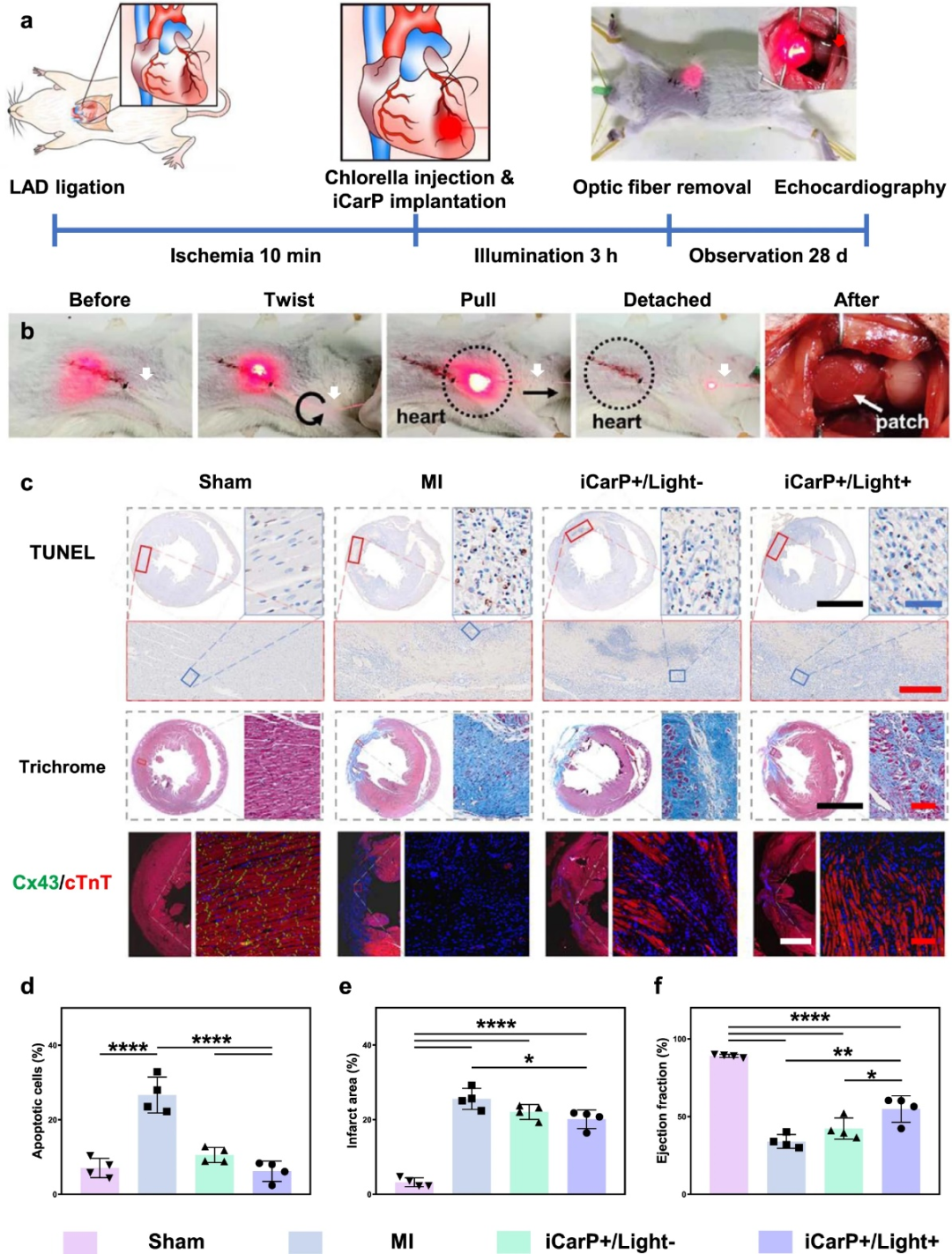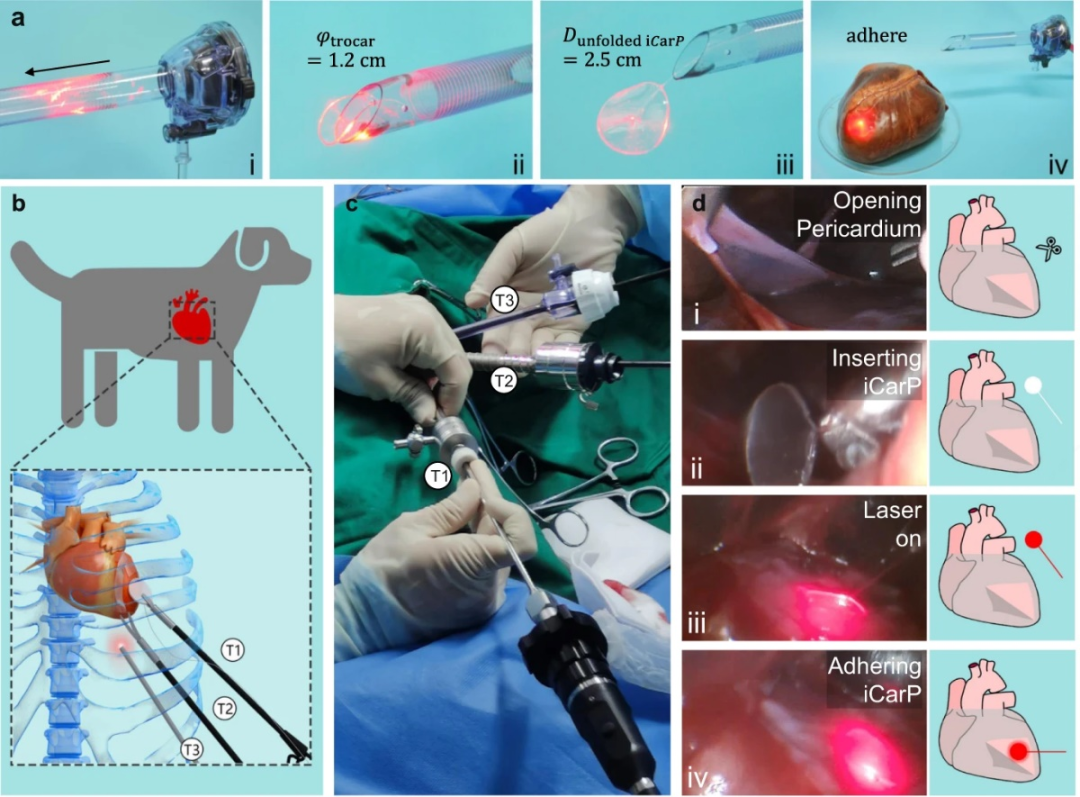Recently, Prof. Min Zhou’s group from Zhejiang University-University of Edinburgh Institute (ZJE) and the collaborators published an article entitled “A biodegradable, flexible photonic patch for in vivo phototherapy” in Nature Communications.

Diagnostic and therapeutic illumination on internal organs and tissues with high controllability and adaptability in terms of spectrum, area, depth, and intensity remains a major challenge.
Here, this group developed a flexible, biodegradable photonic device called iCarP with a micrometer scale air gap between a refractive polyester patch and the embedded removable tapered optical fiber. The iCarP combines the advantages of light diffraction by the tapered optical fiber, dual refractions in the air gap, and reflection inside the patch to obtain a bulb-like illumination, guiding light towards target tissue. ICarP supports long-term, wide spectrum, continuous/pulsatile, deep penetrating (1.5 cm) illumination on beating animal hearts, without physically damaging the target tissue. In vivo photosynthesis as a potential application and the compatibility with minimally invasive implantation in large animal models were demonstrated. This study showed that iCarP could be a safe and powerful device suitable for internal organs/tissues illumination and associated therapy and diagnosis.

Fig. 1 The design, function and demonstrative application of the light scattering photonic device, illuminative cardiac patch (iCarP) for large area, deep illumination on internal organs and tissues.

Fig. 2 Myocardial infarction treatment with iCarP illumination induced in situ photosynthesis.

Fig. 3 ICarP is compatible with minimally invasive implantation.
Link:https://www.nature.com/articles/s41467-023-38554-x







